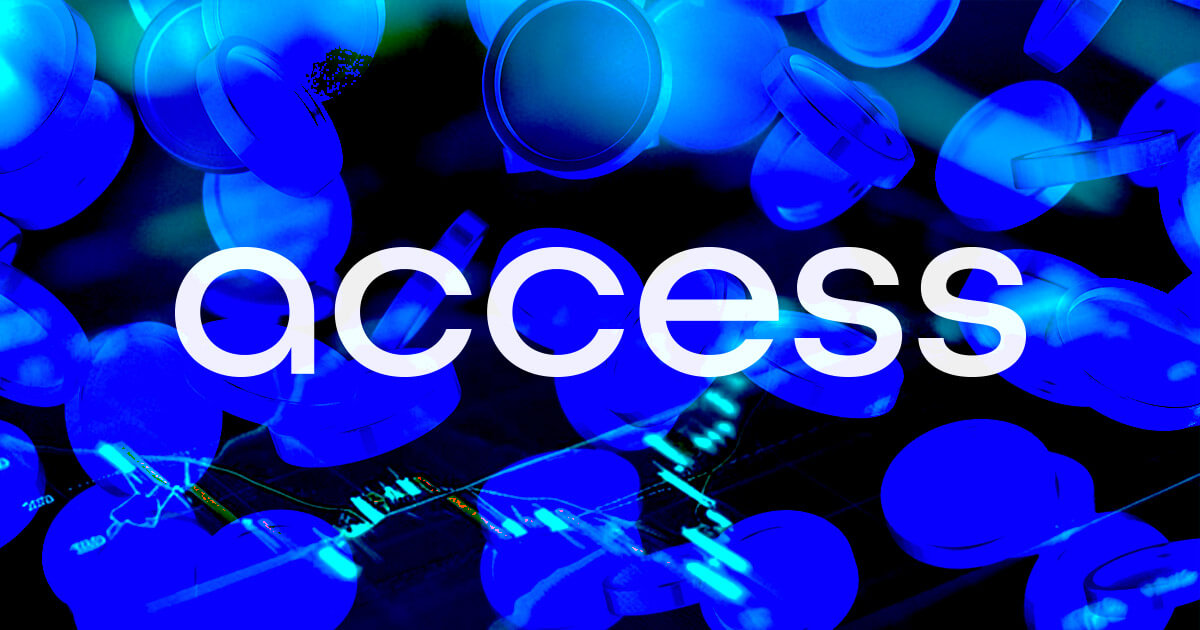18
OctBlockchain's Impact on Content Monetization

The evolution of content tokenization is changing the landscape of digital media, especially within blockchain enterprises such as Solana. Recently, with the listing of Access Protocol on Cube, a hybrid exchange employing secure multiparty computation, it has become increasingly evident that the paradigm of content monetization is shifting toward blockchain technology. This article aims to explore the implications of such advancements, highlighting the intersection of crypto, decentralized finance (DeFi), and governmental collaborations through use cases that transcend traditional monetary systems.
The Need for Content Monetization in the Digital Age
As the digital domain expands, content creators are constantly in search of sustainable monetization mechanisms. Traditionally, revenue streams for creators have relied heavily on advertising and subscription models, which have posed several limitations:
- Dependency on Third Parties: Content platforms often have monopolistic structures leading to reduced revenue shares for creators.
- Lack of Direct Relationships: The intermediary layer can sever the direct connection between creators and their audience, affecting engagement.
- Payment Delays: Creators face inconsistent cash flow due to delayed payment cycles from hosting platforms.
To address these opportunities, Access Protocol leverages Solana's blockchain technology to establish a new model of monetization that empowers creators and enhances user engagement. The integration of blockchain technology facilitates transparency, lower transaction fees, and faster payments, thus revolutionizing the way content is shared and monetized.
Access Protocol: Pioneering Content Monetization
Access Protocol introduces innovative aspects within the blockchain ecosystem:
- Subscription Model: Rather than opting for traditional subscriptions, users stake ACS tokens to access exclusive content.
- Decentralized Control: With blockchain backing, creators maintain ownership over their work without intermediary dependencies.
- Enhanced User Experience: The use of shareable links and tools like Solana’s Actions and Blinks enables seamless integration of crypto transactions across various platforms.

Details of the Cube Listing
In tandem with the recent listing on Cube, creators and token holders are presented with unique engagement opportunities:
- Participants in the ACS listing can engage in Blocks campaigns, earning rewards that enhance liquidity.
- The hybrid exchange model allows for decentralized financial transactions while securing user trust through multi-party computation.
Expanding Global Partnerships
Cube's integration with local financial systems is reinforced through a partnership with the Argentine government. This collaboration aims to explore the potency of blockchain as a tool for financial reforms:
- Identification of blockchain as an integral part of national financial systems to ensure streamlined operations.
- Utilization of decentralized networks to enhance financial services, ensuring accessibility for all citizens.
The administration's support demonstrates a commitment to adapting and embracing innovative technologies, thus positioning Argentina as a leader in blockchain adoption.
The Role of Isometric
Isometric, the transaction network developed by Cube, emphasizes intent-based interactions that facilitate ease of trading across multiple blockchains without requiring asset bridging. Key impact areas include:
| Feature | Description |
|---|---|
| Intent-Based Transactions | Users submit transaction intents, which are verified and settled across multiple chains through decentralized computations. |
| Decentralized Security | Ensures user data is secure while enabling a transparent transaction process across various blockchain networks. |
| Governance and Staking | Isometric token (ISO) will provide governance capabilities allowing users to influence network changes through staking mechanisms. |
User Engagement and Community Growth
Access Protocol’s initiatives through their custom rewards platform, Blocks, serve to stimulate user engagement significantly. The unique rewards structure includes:
- Direct rewards for participation during token listings.
- Opportunities to engage in community-driven token campaigns that ultimately lead to higher liquidity.
Navigating Regulatory Considerations
As blockchain solutions gain momentum, navigating the regulatory landscape will be essential. Key areas that must be addressed include:
- Compliance with Local Laws: Ensuring that all financial operations remain compliant with existing regulations, especially in emerging markets.
- Consumer Protection: Building trust through secure systems that protect user data and transactions.
Future Prospects
Leveraging Blockchain Technology
The combination of blockchain technology and innovative finance systems suggests a transformative future for content creators. Some potential future initiatives include:
- Institutional Collaborations: Encouraging partnerships between blockchain platforms and traditional institutions could facilitate more extensive adoption.
- Global Expansion: Accessing international markets could help broaden the scope of monetization for creators operating in diverse regions.

Conclusion
The recent development regarding Access Protocol’s listing on Cube signals heightened interest in blockchain solutions for content monetization. It underpins a broader trend toward agile and decentralized financial systems poised to reshape how digital media is consumed and monetized. Innovations such as Isometric and partnerships with governments like Argentina illustrate the promising potential of blockchain technology in real-world applications.
As this landscape continues to evolve, staying attuned to regulatory changes, community needs, and technological advancements will be crucial for all stakeholders involved.
For More Information
To delve deeper into the subject matter discussed in this article, consider exploring the following resources:
- Universe Today for the latest news in science and technology.
- FAQ of CryptoSlate for insights into cryptocurrency and blockchain mechanisms.
- Research page on CryptoSlate for in-depth analyses.

 Metaversai
Metaversai